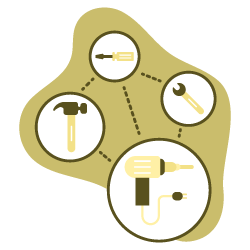Edge SEO gives us new possibilities and ways of delivering both technical SEO best practice and quick fixes to serious technical issues without relying on DevOps.
However, just because we can now (depending on infrastructure ownership) circumnavigate a path around development doesn’t mean that we should cut them out of the conversation altogether.
When I first started talking about Edge SEO at TechSEO Boost 2018, Stephan Bajaio asked a question from the audience about the main challenges I saw in people adopting these new methods, and my naïve response was that the biggest challenge was because of how “new” it was.
This response, however, should be expanded further, and the potential downfall of edge SEO is not that it is new; it is that integrating the technology into internal processes—and understanding when and how to use it —will be a challenge.
Developing Internal Processes
As much as we (as consultants) can help clients instil processes around edge SEO scoping and deployments, ultimately processes have to come from within and be shaped around existing processes, which obviously differ between companies.
Despite these essential differences, key principles around edge SEO should respect the following ideas:
- They have to be declared as business processes with an appointed overseer.
- They should complement, or be an amendment to, existing processes surrounding development and deployment processes.
- All stakeholders already involved in development and deployment should be stakeholders within tools like Sloth and Spark.
Access to CDN Credentials
Any access to your CDN, or any part of your infrastructure should be locked down within the organisation, even if they’re not being used for edge SEO purposes. Through the base dashboard of most CDNs, considerable damage can be done through changing settings.
In a ContentKing Article, surrounding security and Edge SEO Troy Hunt said that:
The best approach is to ensure its only sufficiently skilled individuals who have access to configuration at this level and that they comprehensively test all changes before deployment.
Data Privacy & Compliance
Regardless of whether or not you’re obliged to follow the European GDPR regulations, you will be governed by some form of data handling legislation, as well as ethical data handling codes. For most organisations, proper data handling processes are a default, but CDNs can raise questions around your data handling and should definitely be included in your data-mapping.
Given that most CDNs make use of global anycast networks, with server locations in numerous countries. However, most CDNs have GDPR policies and data compliance policies, so incorporating these into your own data mapping shouldn’t be too difficult.
It’s important in your data mapping that you’re declaring the use of cloud services, and given that GDPR has been in-place for almost a year now, if you’re not yet in a state of compliance… or getting close to being – this is a wider issue than whether or not you can do redirects on a serverless application.
[Case Study] Managing Google’s bot crawling
Conclusion
The challenges of implementing edge SEO don’t stem so much from the “newness” of the concept, but specifically from integrating new processes and data-mapping onto existing ones.
In this article we’ve looked at some of the specific challenges to companies who want to implement edge SEO–namely integration into existing internal processes, managing access to CDN credentials, and maintaining data privacy and compliance standards. Though differences in company structure and policies make it impossible to offer blanket solutions to this type of challenge, in many cases, potential roadblocks can be addressed by assimilating edge SEO processes and standards into existing best practices.
It’s up to consultants who are interested in implementing edge SEO to understand where these difficulties can arise, and to propose strategies that reduce the risks and friction of adding new strategies within what can often be a complex and regulated corporate environment.
Dan’s Taylor Edge SEO series
Part 1: Resolving SEO issues on legacy (and modern) platforms through edge SEO
Part 2: Creating & Managing Redirects on The Edge
Part 3: Integrating edge SEO into internal policies and workflows

